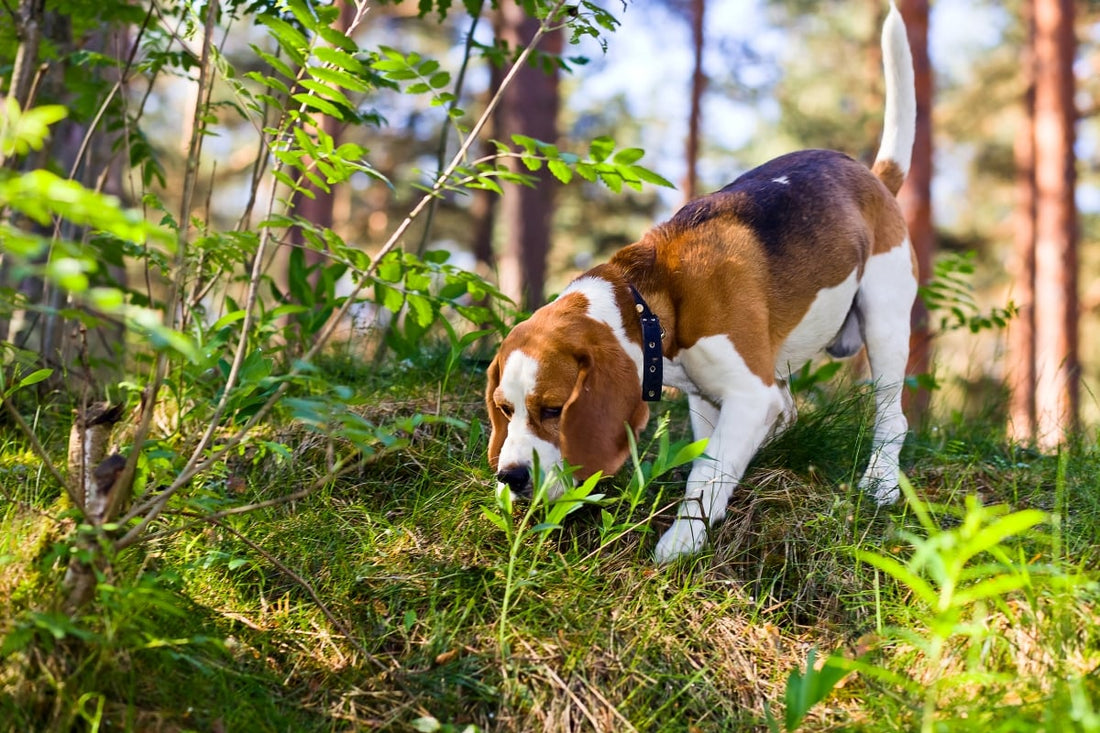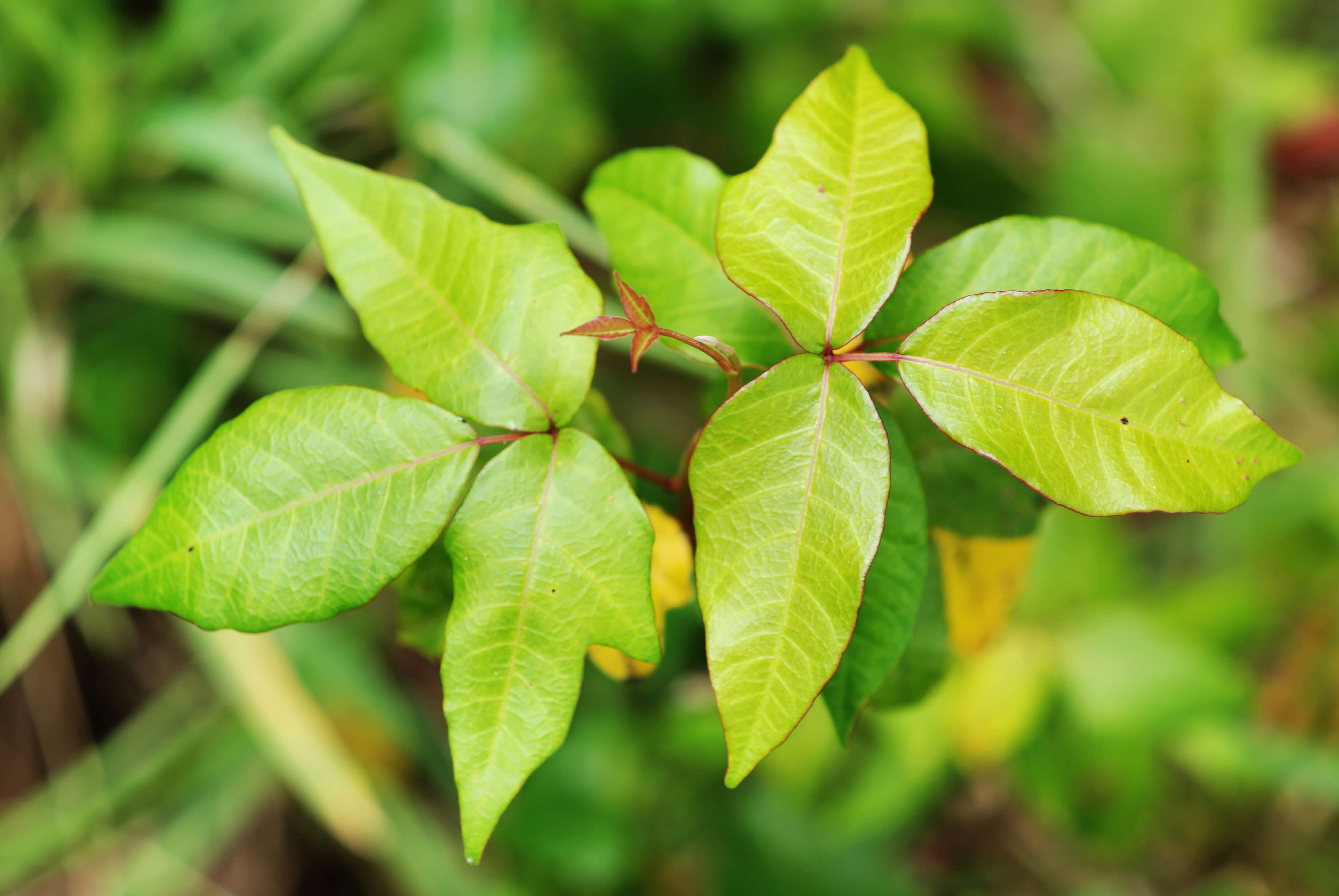
How to Spot & Treat Poison Ivy's Itchy Effects
Warm weather is right around the corner, and that means it’s time for a hike along your favorite nature trail with your pup. Everything has started to bloom, including the bane of every dog’s existence: poison ivy.
A run-in with this plant can make a leisurely walk turn south fast. Here’s a quick rundown of how to spot poison ivy and treat your pup’s symptoms when they roll in it or catch a nibble.
What poison ivy looks like
Poison ivy is good at hiding in plain sight because it blends in with the surrounding foliage. The plant has green, spiky leaves that grow in clusters of three. The shape of a poison ivy plant is usually either a shrub or group of vines. There’s a high chance your dog will cross paths with poison ivy at some point because it grows in wooded areas, along bike trails, in backyards and many other places your dog frequently visits.
Poison ivy excretes sap that contains urushiol oil. This is the part of the plant that causes skin irritation for both humans and dogs. Urushiol oil runs throughout the entire plant, so any part you or your dog touches will lead to a rash. If you’re not sure whether or not the plant in front of you is poison ivy, it’s best to err on the side of caution and move to a safer location.

Treating contact with the skin
Similar to humans, dogs who come into direct contact with poison ivy might develop a red, itchy rash. Inflammation and swelling are among the most common symptoms, and your dog might also experience raised bumps or oozing blisters on the affected area. Owners will be able to tell where their dogs made contact with poison ivy because your pooch will consistently scratch, lick or bite the rash.
Dogs are less likely to get poison ivy poisoning than their human counterparts. However, breeds with short fur are more susceptible because they lack a thick coat that would otherwise protect their skin from the urushiol oil. Dogs typically develop a rash in places where they have the least amount of fur covering their bodies, such as the stomach.
If your pup makes contact with poison ivy, the first thing you should do when you arrive home is give your pooch a warm bath. Don’t forget to wear gloves! You need to scrub out the urushiol oil with mild shampoo before your pup is allowed to come into contact with furniture, people or other dogs. Dry off your dog with a clean towel and wash it in a separate load before using it again.
After the bath, dog owners have a few options for treating the rash. Veterinarians recommend applying a cold compress to the affected area and running a fan wherever your dog likes to hang out. Benadryl is generally safe to use with dogs, but you should always consult a vet about proper dosage first. Some popular home remedies include treating the rash with aloe vera, rubbing alcohol and calamine lotion. Again, check with your vet before attempting at-home treatments.
How to remedy an upset stomach
Poison ivy that’s been ingested presents more of a problem for dogs. Symptoms of ingested poison ivy are pretty obvious, with vomiting and diarrhea being the most common. While dog owners can remedy a skin rash at home, poisoning that occurs from the inside out warrants an immediate trip to the vet.
Poison ivy can become dangerous in a dog’s digestive system if nothing is done about it. Dogs who’ve been poisoned often refuse water and develop a loss of appetite. On top of that, they’re losing a ton of fluids from the constant vomiting and diarrhea. For these reasons, poison ivy poisoning can easily lead to severe, life-threatening dehydration.
The best way to treat ingested poison ivy at home is by encouraging your pup to drink plenty of fluids and stick to a bland diet until they start to feel better. Closely monitor their symptoms over the next few weeks and give the vet a call if your dog’s condition stays the same or gets worse.
If your pup’s case is severe, you don’t have to worry as long as you seek prompt treatment. Poisoning that’s left untreated for too long may require intravenous fluids to quickly rehydrate the dog. Vets also usually prescribe an antibiotic in case bad bacteria or fungi made its way into the pup’s digestive system. This is a preventative measure so your dog can avoid further complications.
Dog owners can protect their furry friends and still enjoy the trails if they learn how to identify and steer clear of poison ivy. Prevention is the best treatment, and poison ivy poisoning is no exception. Our precious pups deserve the freedom to explore their environment as long as loving owners are there to save them from trouble!


